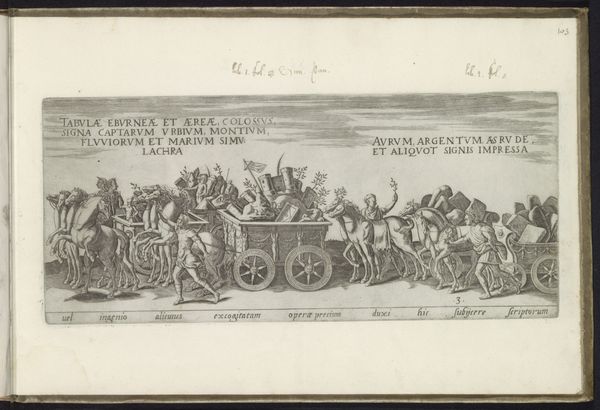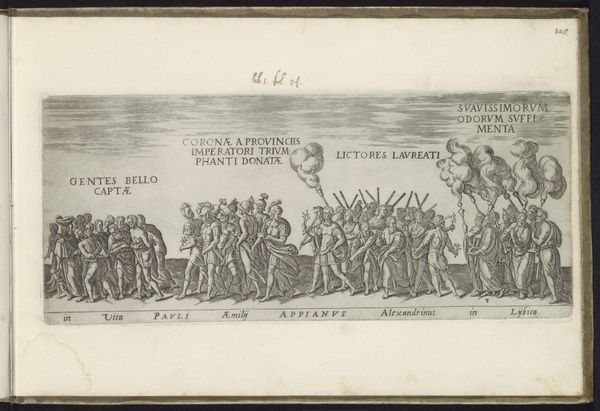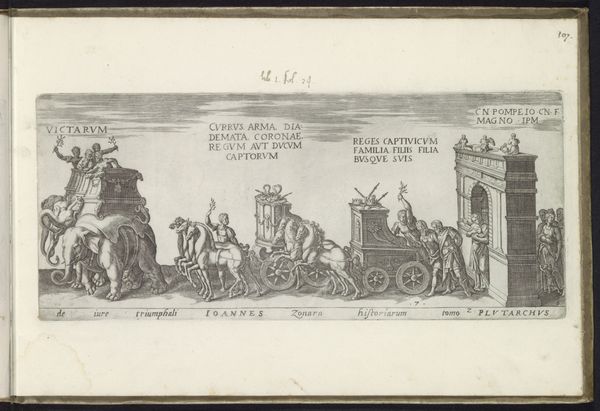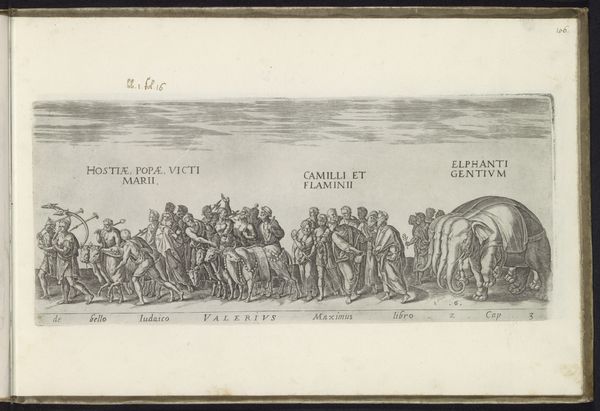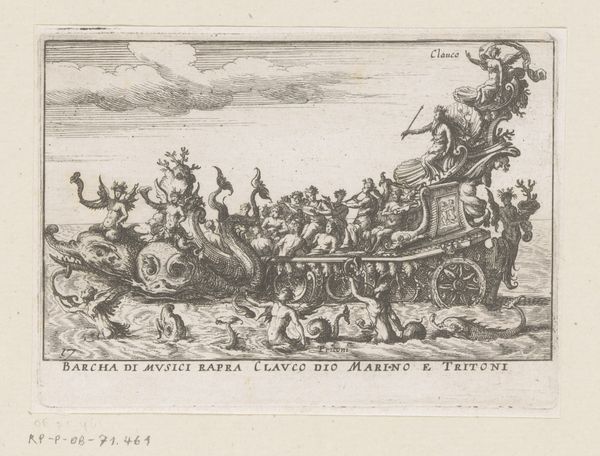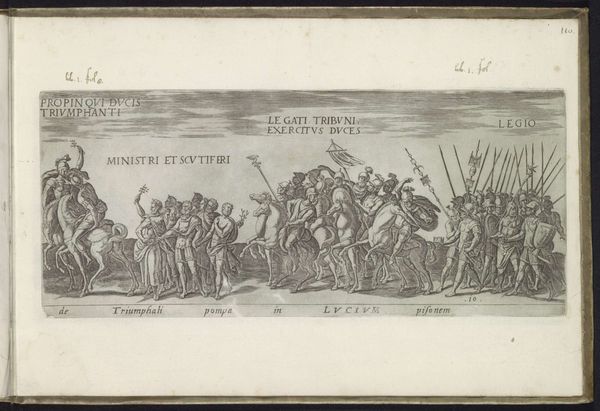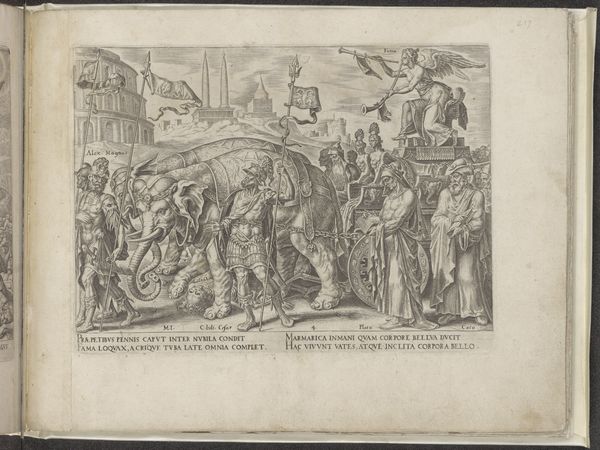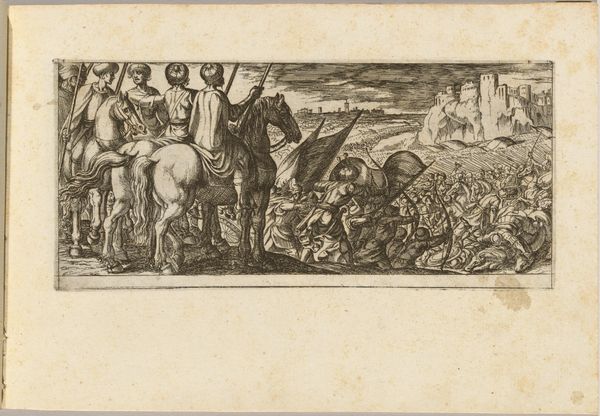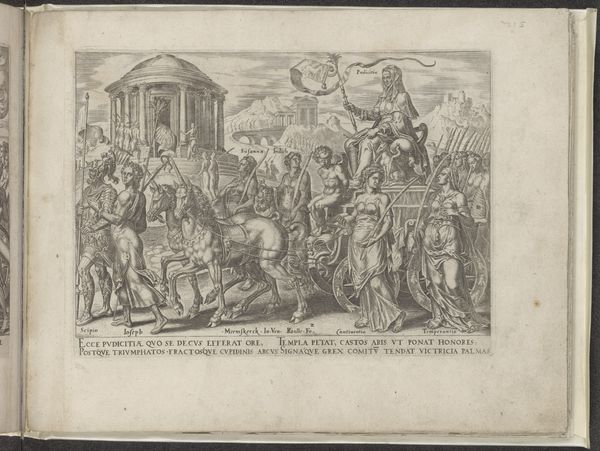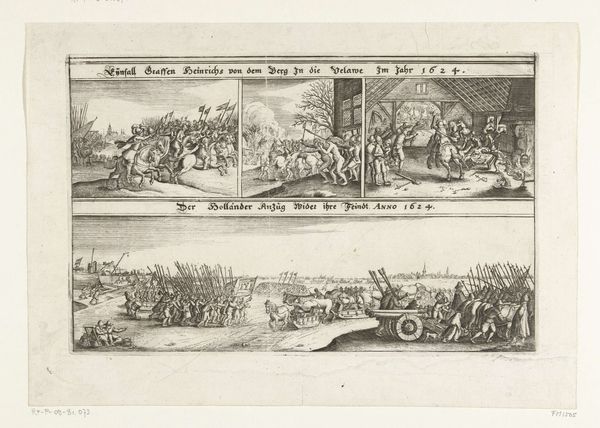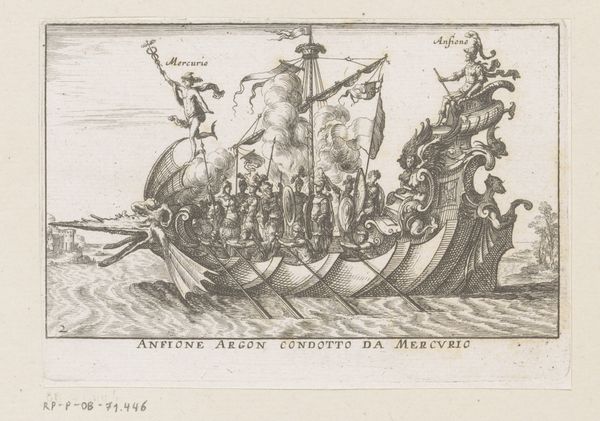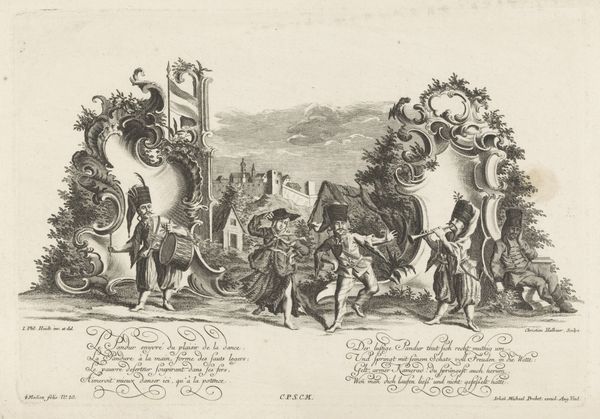
Triomf processie met wagens met oorlogsbuit en mannen die kraters met munten dragen 1618
0:00
0:00
print, engraving
#
narrative-art
#
baroque
# print
#
figuration
#
line
#
history-painting
#
engraving
Dimensions: height 155 mm, width 361 mm
Copyright: Rijks Museum: Open Domain
Curator: This detailed engraving, "Triomf processie met wagens met oorlogsbuit en mannen die kraters met munten dragen," dates back to 1618 and is attributed to Onofrio Panvinio. It depicts a triumphal procession. What stands out to you when you first look at it? Editor: It’s stark, isn't it? The strong lines emphasize the relentless nature of the procession, that insistent forward march. There's an air of conquest, but also a heavy, almost burdensome quality to all that loot. Curator: Precisely. These kinds of triumphal entries were major public events designed to solidify power, demonstrating military strength but also displaying wealth. Notice the varying objects— weaponry, gold, and silver vessels – each adding to the spectacle. Editor: The use of enslaved bodies as transport too – really makes it apparent who wins and who loses in this arrangement. What does that visual economy tell us? It is a parade for some, while simultaneously, subjugation of others. Curator: The artist seems preoccupied with presenting an accurate depiction of such a procession – a specific display of spoils in context – reflecting a concern with historical and social order. Note how even the inscriptions add layers of information intended for an informed public. Editor: In a way, the inscription becomes a powerful caption. It explicitly states who benefits, reminding viewers that behind the splendor of conquest, a human cost must be accounted for. The details that convey not celebration, but dominance. Curator: Agreed. By analyzing these public displays, we gain critical insight into how states legitimized themselves and shaped public memory through controlled narratives. The print becomes a historical record. Editor: And more than a simple historical record, it can be read as a critique of unbridled power – a demonstration of both triumph and oppression permanently inscribed together. A story about wealth built through injustice and on stolen artifacts, that carries profound contemporary significance, I think. Curator: Indeed, the engraving compels us to reflect not only on the past, but the continued echoes of these dynamics in the present. Thank you for highlighting these often-overlooked threads, helping to deepen our understanding of this Baroque print. Editor: Thank you. It's critical to dissect celebratory narratives and ensure our focus acknowledges who parades and who is subjugated during these events.
Comments
No comments
Be the first to comment and join the conversation on the ultimate creative platform.
